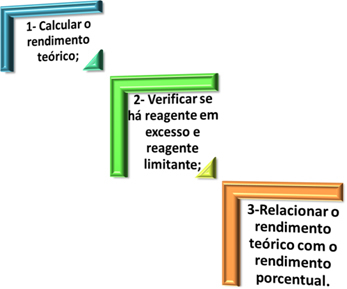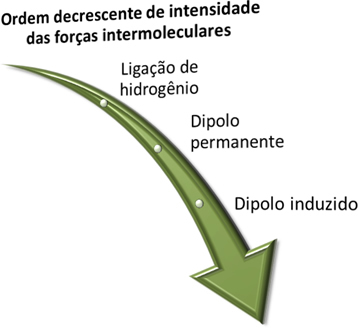Specific heat (c) is a physical quantity that is related to the amount of heat that produces a thermal variation, being a characteristic of each material.
In this way, it determines the amount of heat needed for the 1 °C variation of 1g of the substance.
Specific Heat Table
Remember that each substance has a specific heat. Check below a table with 15 substances and the specific heat values of each one.
| Substance | Specific Heat (cal/g.ºC) |
|---|---|
| Water | 1 cal/g.°C |
| Ethyl alcohol | 0.58 cal/g.°C |
| Aluminum | 0.22 cal/g.°C |
| Air | 0.24 cal/g.°C |
| Sand | 0.2 cal/g.°C |
| Carbon | 0.12 cal/g.°C |
| Lead | 0.03 cal/g.°C |
| Copper | 0.09 cal/g.°C |
| Iron | 0.11 cal/g.°C |
| Ice | 0.50 cal/g.°C |
| Hydrogen | 3.4 cal/g.°C |
| wood | 0.42 cal/g.°C |
| Nitrogen | 0.25 cal/g.°C |
| Oxygen | 0.22 cal/g.°C |
| Glass | 0.16 cal/g.°C |
According to the data in the table, water has a specific heat of 1 cal/g.ºC. This means that the energy of 1 lime is necessary for a variation of 1 °C in 1 g of water.
Specific Heat Formula
To calculate the specific heat of substances, the following formula is used:
c = Q/m. ΔT or c = C/m
Where,
ç: specific heat (cal/g°C or J/Kg. K)
Q: amount of heat (lime or J)
m: mass (g or kg)
ΔT: temperature variation (°C or K)
Ç: thermal capacity (cal/°C or J/K)
In the International System (SI), specific heat is measured in J/Kg. K (Joule per kilogram and per Kelvin). However, it is very common to be measured in cal/g°C (calorie per gram and per degree Celsius).
1 cal = 4.186 J
Specific Molar Heat
Molar specific heat, also called molar heat capacity, is determined by the relationship between heat capacity and the number of moles present.
Thus, when the heat capacity of a substance is given to one mole of that substance, it is called molar specific heat.
Specific Heat and Thermal Capacity
Another concept that is related to specific heat is that of thermal capacity (Ç).
This physical magnitude is determined by the amount of heat supplied to a body and the variation in temperature suffered by it.
It can be calculated by the following formula:
C = Q/ΔT
Where,
Ç: thermal capacity (cal/°C or J/K)
Q: amount of heat (lime or J)
ΔT: temperature variation (°C or K)
Example: If a body received 100 cal and its temperature varied by 25°C, then its heat capacity is 4 cal/°C because
C = Q/ΔT
C = 100 cal / 25 °C
C = 4 cal/°C
This means that in order to vary 1°C from its temperature, the body needs to receive 4 cals.
Thermal capacity and specific heat are related through the formula:
c = C/m
Where,
Ç: thermal capacity (cal/°C or J/K)
m: mass (g or kg)
ç: specific heat (cal/g°C or J/Kg. K)
If in the example used above the body has a mass of 10 grams, then its specific heat is 0.4 cal/g.ºC, because
c = C/m
c = 4 cal/°C / 10 g
c = 0.4 cal/g.°C
Therefore, 1 gram of the substance needs 0.4 cal to vary 1 °C from its temperature.
Latent Heat and Sensitive Heat
In addition to specific heat, there are other forms of heat, of which the following stand out:
latent heat (L): corresponds to the amount of heat received or given away by a body. In this case, your temperature remains the same while your physical state changes.
In the International System (SI), latent heat is measured in J/Kg (Joule per kilogram), however, it can be measured in cal/g (calorie per gram). It is calculated by the following formula:
Q = m. L
Where,
Q: amount of heat (lime or J)
m: mass (g or kg)
L: latent heat (cal/g or J/Kg)
Note: Unlike specific heat, latent heat is not temperature dependent. This is because when state changes occur, the temperature does not vary. For example, a melting ice cube, the temperature of water in solid and liquid state is the same.
Sensitive heat: corresponds to the temperature variation of a body, for example, when we heat a metal bar. In this experiment, the temperature of the metal increases, however, its physical state (solid) does not change.
It is calculated by the following formula:
Q = m. ç. Δθ
Q: amount of sensible heat (lime or J)
m: body mass (g or kg)
ç: specific heat of the substance (cal/g°C or J/Kg°C)
Δθ: temperature variation (°C or K)
Also read about: Calorimetry
Entrance Exam Exercises with Feedback
question 1
(Mackenzie) On a morning of blue skies, a swimmer on the beach observes that the sand is very hot and the sea water is very cold. At night, this same bather observes that the sand on the beach is soft and the sea water is warm. The phenomenon observed is due to the fact that:
a) the density of sea water is less than that of sand.
b) the specific heat of sand is less than the specific heat of water.
c) the thermal expansion coefficient of water is greater than the thermal expansion coefficient of sand.
d) the heat contained in the sand, at night, spreads to the sea water.
e) the agitation of sea water slows down its cooling.
Correct alternative: b) the specific heat of sand is less than the specific heat of water.
The value of specific heat depends on the substance that makes up the body. In this case, water has a higher specific heat than sand and, therefore, a greater amount of heat is needed to vary the temperature of 1 gram of water than for 1 gram of sand.
question 2
(UFPR) To heat 500 g of a certain substance from 20°C to 70°C, 4000 calories were needed. The thermal capacity and the specific heat are respectively:
a) 8 cal/°C and 0.08 cal/g.°C
b) 80 cal/°C and 0.16 cal/g. °C
c) 90 cal/°C and 0.09 cal/g. °C
d) 95 cal/°C and 0.15 cal/g. °C
e) 120 cal/ºC and 0.12 cal/g. °C
Correct alternative: b) 80 cal/ºC and 0.16 cal/g. °C
Thermal capacity is calculated using the formula C = Q/Δθ and is related to specific heat mathematically by C = m.c
Replacing the statement data in the formulas, we have:
question 3
(UFU) 240 g of water (specific heat equal to 1 cal/g°C) is heated by absorbing 200 W of power in the form of heat. Considering 1 cal = 4 J, the time interval required for this amount of water to vary its temperature by 50 °C will be?
a) 1 min
b) 3 min
c) 2 min
d) 4 min
Correct alternative: d) 4 min
1st step: calculate the amount of heat
Step 2: Convert Calories to Joules
1 cal - 4 J
12000 cal - x
x = 12000 cal. 4 J/1 cal
x = 48 000 J
3rd step: calculate power
P = work/time
200 W = 48 000 J/time
time = 48 000 J/200 W
time = 240 s
Step 4: Convert Seconds to Minutes
60 s - 1 min
240 s - y
y = 240 s. 1 min/60 s
y = 4 min
Read too:
- Heat and Temperature
- heat spread
- Thermal balance



